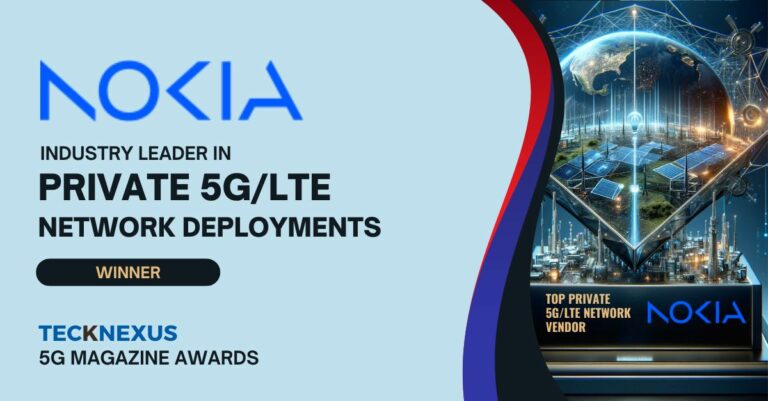Network Complexity
Networks are becoming increasingly more sophisticated and complex. On the one hand, operators need to manage their existing networks; on the other, the sprint towards 5G adds to the complexity that operators need to manage, while also bringing many advantages. For example, V2V and V2X technology, AR/VR, smart cities, ultra-HD video services, smart industry 4.0, and a continuously and more densely connected world are some of the realities of 5G.
Delivering exciting new services to consumers and enterprises, while also opening up new revenue streams to operators, are made possible due to ultra-reliable low latency communication (URLLC), enhanced mobile broadband (eMBB), and massive machine type communication (mMTC) that are attainable with 5G connectivity.
Other complexities that come along with 5G are RAN virtualization, Core virtualization (which is the move to 5G SA), and hybrid cloud computing (managing the 5G SA Core, as well as managing legacy networks). The new technologies and network architecture will increase efficiency, reduce costs, and provide the end-user with a great customer experience.
Challenges for Operators
When upgrading their network architecture to embrace the 5G environment, operators need to be aware of numerous challenges. Previous generations of mobile technology are mature and understood, whereas the 5G architecture (RAN and Core) is new, so some elements must be ironed out.
It is important to note that in a physical network, things are less complicated than in a virtualized network. Adding to this complexity is that virtual networks are much more dynamic, and things can change on the fly. A network function could be X, then switched to Y instantly. This is not something physical hardware based 4G network would be able to do.
In a world where operator budgets are squeezed and the personnel required to keep up with the demand for services, operators are streamlining their network operations to manage OPEX and CAPEX. Therefore, finding a way to keep pace with customer expectations and monitor the network efficiently is becoming more and more imperative.
Given the complexity of 5G networks, operators are harnessing the power of technology and turning to an increased usage of AI/ML to cover various job functions. Network operators essentially need an automated approach to managing their 5G networks. Why? Simply put, it is becoming impossible to keep assuring such systems on a purely manual basis.
Another facet to consider when implementing 5G is customer experience. Despite all the challenges and complexities, at the end of the day, the 5G network transformation needs to be transparent to customers, and operators need to deliver a great customer experience.
However, with new technologies being implemented and merging with older systems, there is the danger of things falling through the cracks. How would an operator know if customers are experiencing crashes or other disruptions in their service/connectivity? Why risk a high customer churn rate?
Benefits of Automation
Having a system in place that allows you to handle a massive amount of data at a breakneck pace provides some distinct benefits, such as:
Lower Operating Expenditure – Automation increases efficiency, which in turn will allow for a lowering of expenses. Operators will be able to maintain a critical skilled workforce and let artificial intelligence/machine learning handle tasks that are more easily done by machines.
Customer Centricity – Automation allows you to focus on the customer experience proactively. Not waiting for issues to occur but detecting and rectifying service degradations before they affect customers.
Consistency – Human error can creep into any task or manually led system. Removing monotonous tasks such as data entry and using artificial intelligence (AI) to teach people higher-order operations enables a consistent and more accurate output.
Improved QoE – Consistent monitoring allows for a smoother QoE, noticing problems even before they may become issues for customers.
Increase Revenue – By providing a superior quality of service, such as the points mentioned above, operators can increase their revenue by offering premium services to customers.
At its core, automation is nothing without the correct data that facilitates data-driven decisions and activates closed-loop operations.
Solution
Operators need an automated assurance solution that gives them real-time insights (using AI/ML) into what is happening inside their networks, which essentially enables them to have high-level automation. This will also allow for the standards of Quality of Experience (QoE) to remain high.
The RADCOM ACE portfolio, including RADCOM AIM, provides this. Using our innovative technology, we enable operators to gain the right data to enable closed-loop network operations.
Automated Assurance – Automates solution deployment for on-demand instantiation, scaling, healing, and updating for a closed-loop approach to assurance with Kubernetes controlling the containerized components’ lifecycle, ensuring the operator always has complete network visibility.
Fully Cloud-Native – RADCOM ACE is developed from the ground up with a cloud-native design, allowing rapid deployment as containers in multiple cloud environments to provide insights across multiple clouds (public, private and hybrid) all in a single solution.
Advanced built-in AI and ML – Our AI and ML capabilities are built into the solution from inception, allowing for a variety of AI-based use cases, such as Anomaly detection, Predictive and Prescriptive Customer Experience analytics in real-time. This enables the operator to trigger closed-loop actions to deliver great customer experiences proactively.
Supports 5G SA Advanced Use Cases – Smartly monitors end-to-end network slicing, edge computing and private networks to offer operators a future-proof solution for dynamic monitoring of critical revenue-generating services
RAN to Core Analysis – Gain a service-level understanding of the real E2E customer experience by providing the operators with data from across all their services and networks for complete network visibility to enable automated network operations.
Data Monetization – Once automation is in place, operators can gather a vast amount of data from various sources. Using this data to target their users and catering specific services to their needs by monetizing it can provide another revenue source for the operator and a superior customer experience.
So Why Automated Assurance?
To ensure 5G network quality, operators must deploy cloud-native assurance solutions with built-in AI/ML. This will provide the most efficient way to embed artificial intelligence into the network that will help engineers manage their networks. As crucial as assurance is, it cannot be done in today’s complex environment without an automated approach. Our solution enables operators to stay ahead of the curve and implement closed-loops operations.
In short, RADCOM ACE provides complete visibility and rich data insights that trigger closed-loop actions to ensure service quality and proactively prevent network degradation, ensuring a superior customer experience and operational excellence in 5G, enabling operators to move to closed-loop automation.




























































